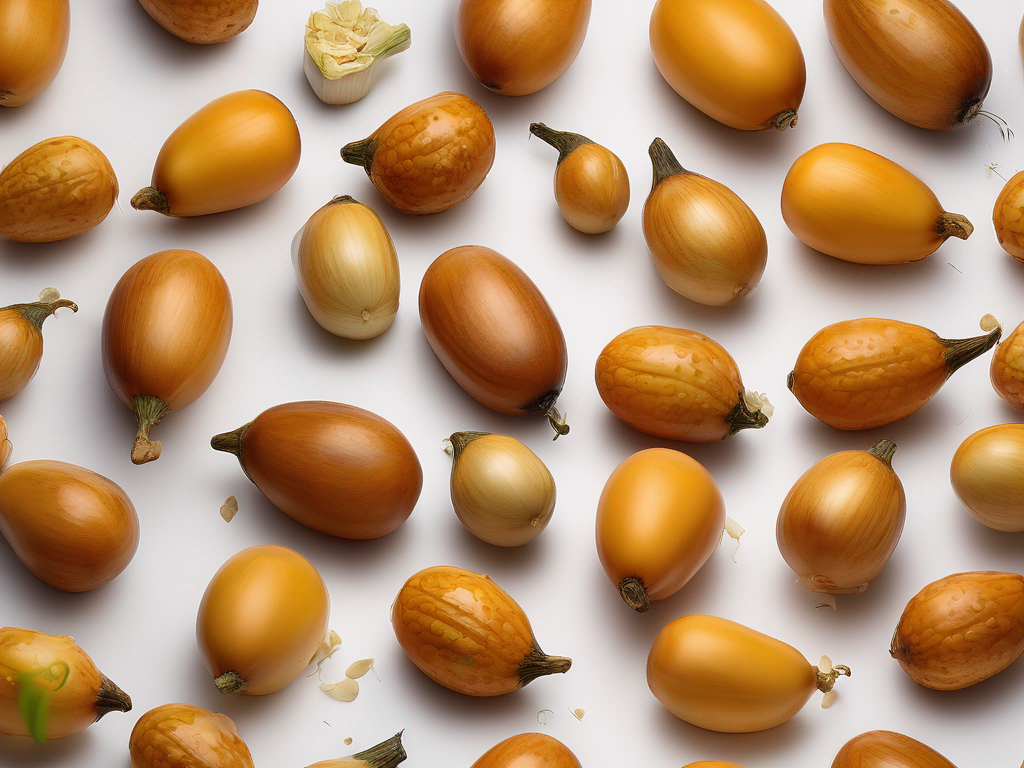
Signs of Spoiled Calabash and Safe Consumption Tips
Get Your Free Food Safety Cheat Sheet
30 most common foods with instant answers. Print it and stick it on your fridge—completely free!
Signs of Spoiled Calabash and Safe Consumption Tips
Calabash, also known as bottle gourd or opo squash, is a popular vegetable used in various cuisines around the world. It is known for its mild flavor and versatile uses in cooking. However, like any other food item, calabash can go bad if not stored or handled properly. In this blog post, we will discuss the signs that indicate calabash has gone bad and provide tips on how to safely consume it. (Calabash)
Understanding Calabash
Before we delve into the signs of spoiled calabash, let's first understand what calabash is. Calabash is a vine plant that belongs to the gourd family. It is characterized by its elongated shape and light green color. The flesh of the calabash is soft and spongy, with small white seeds embedded in it.
Calabash is a nutritious vegetable that is low in calories and rich in essential nutrients like vitamins A and C, potassium, and fiber. It is commonly used in soups, stews, stir-fries, and curries.
Signs of Spoiled Calabash
Here are some signs that indicate calabash has gone bad and should not be consumed:
1. Mold or Discoloration
- Mold growth on the surface of the calabash indicates spoilage.
- Discoloration, particularly dark spots or patches, is a sign that the calabash is no longer fresh.
2. Foul Odor
- A strong, unpleasant odor emanating from the calabash is a clear indication that it has spoiled.
3. Slimy Texture
- If the flesh of the calabash feels slimy or slippery to the touch, it is a sign of spoilage.
4. Bitter Taste
- Spoiled calabash may have a bitter or off-flavor that is distinct from its usual mild taste.
5. Soft or Mushy Texture
- Calabash that feels soft or mushy when pressed is likely past its prime and should be discarded.
Safe Consumption Tips
While it's important to be vigilant for signs of spoiled calabash, there are ways to ensure that you can safely consume this versatile vegetable:
1. Proper Storage
- Store calabash in a cool, dry place away from direct sunlight.
- Keep it in the refrigerator if you live in a warm climate to extend its shelf life.
2. Check Before Use
- Before using calabash in your cooking, inspect it for any signs of spoilage such as mold, discoloration, or foul odor.
3. Cut and Taste Test
- If you are unsure about the freshness of calabash, cut a small piece and taste it. If it tastes bitter or off, discard the entire vegetable.
4. Cook Thoroughly
- Cooking calabash thoroughly can help kill any harmful bacteria that may be present due to spoilage.
5. Use Fresh Calabash
- Whenever possible, choose fresh, firm calabash with no visible signs of damage or decay.
Conclusion
In conclusion, calabash is a nutritious and versatile vegetable that can enhance the flavor and nutritional value of your dishes. By being aware of the signs of spoiled calabash and following safe consumption tips, you can enjoy this vegetable without compromising your health. Remember to store calabash properly, check for spoilage before use, and cook it thoroughly to ensure safe consumption. Stay vigilant and trust your senses when it comes to determining the freshness of calabash. Enjoy the benefits of this healthy vegetable in your meals while prioritizing food safety. (Calabash)
Authoritative Food Safety References
These agencies and university labs inform every tip and health precaution we publish.
USDA FoodKeeper – Cold Storage Guidelines
Official refrigerator, freezer, and pantry timelines maintained by the U.S. Department of Agriculture.
Visit USDA FoodKeeperFDA Produce Safety Rule & Grower Guidance
Field-to-fridge handling practices that prevent contamination of fruits, vegetables, and leafy greens.
Visit FDA Produce SafetyCDC Foodborne Illness Prevention Hub
Surveillance-backed guidance on pathogens, symptoms, and steps to reduce foodborne illness risk.
Visit CDC Food SafetyUC Davis Postharvest Technology Center
University research detailing optimal storage atmospheres for produce after harvest.
Visit UC Davis PostharvestPenn State Extension – Home Food Preservation & Safety
Peer-reviewed extension bulletins on safe canning, chilling, and reheating practices.
Visit Penn State ExtensionGet Your Free Food Safety Cheat Sheet
30 most common foods with instant answers. Print it and stick it on your fridge—completely free! Want more? Upgrade to the complete guide with 70+ foods.
Scan your food directly and get instant safety info using our AI-powered camera feature.